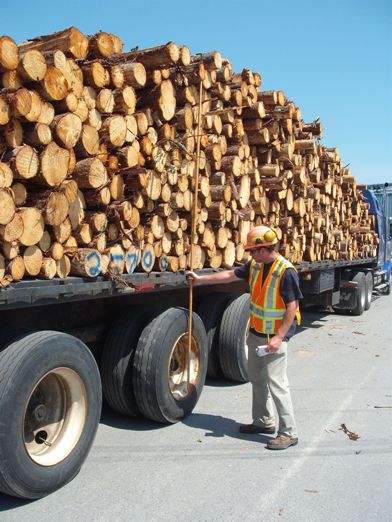
Scaling
Timber scaling can be defined as the act of measuring the volume or mass of harvested primary wood products. Examples of these products are sawlogs, veneer logs, studwood, pulpwood, and fuelwood to name a few. Scaling procedures for such products are outlined in the provincial Scaling Manual. The manual is intended to standardize scaling so that buyers and sellers of primary wood products get a fair and consistent measure. Every person involved in a wood transaction is affected by scaling, which means woodlot owners, woods workers, forestry contractors, truckers and wood processing facilities have a stake in the fair measure of primary wood products. Standardized scaling is good business for everyone.
The Scalers Act mandates that individuals or organizations scaling more than 1000 cubic metres or more of primary wood products per year are required to possess an active scaling license. The Department of Natural Resources maintains a scalers database which tracks those who have licenses, which licenses are active, and which are in-active. To maintain their active scaling status a scaler must attend and pass a scaler refresher course every five years. This ensures individuals responsible for wood measurement are kept up to date and meet present scaling standards.
Types of Scaling


